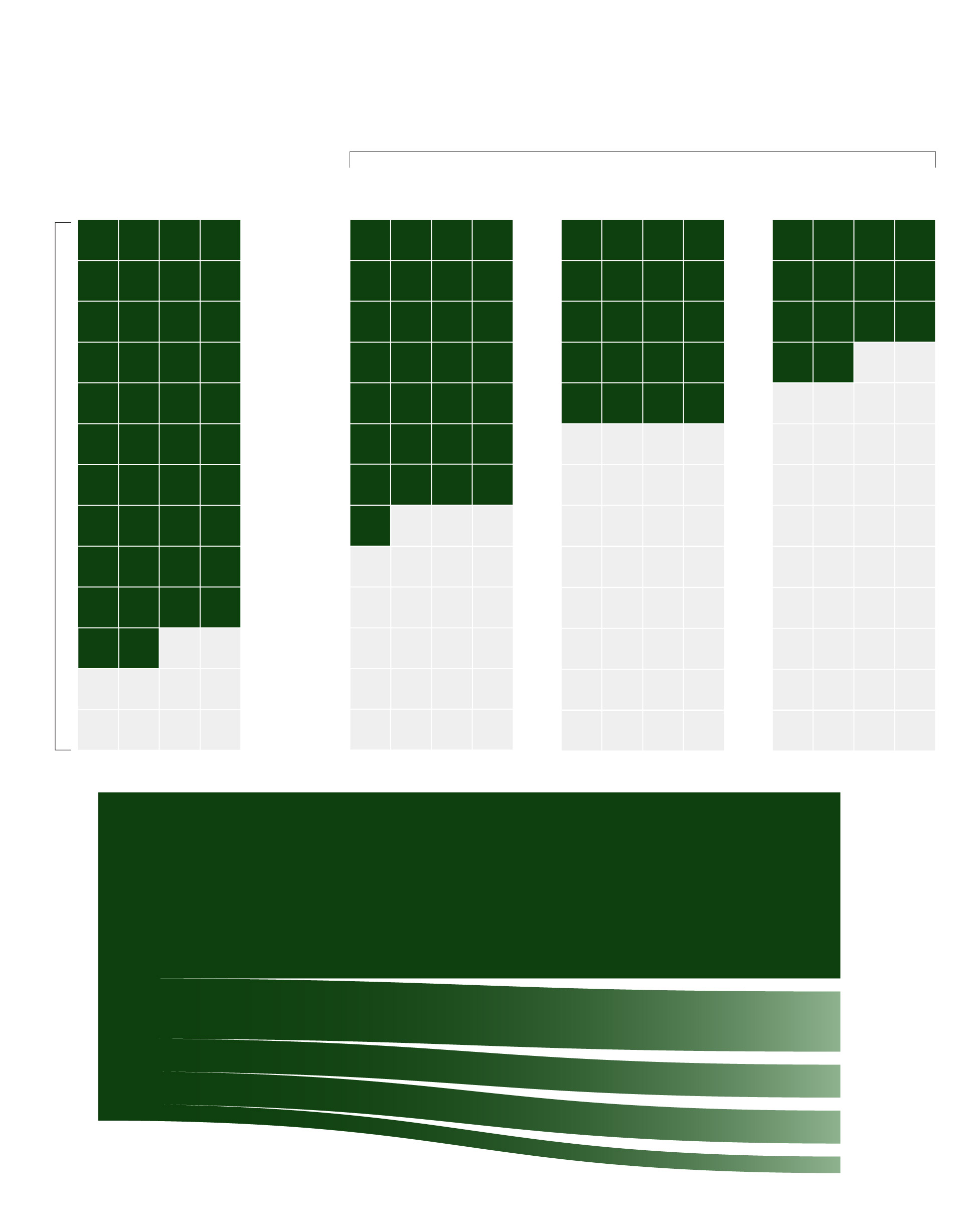The Washington Post spoke to writers, union organizers with the Writers Guild of America, studio representatives and experts to debunk some persistent myths about TV writing.
“TV writers are rich, or at least glamorous.”
Many say they’re barely scraping by.
Leaving aside one-in-a-million star showrunners like Shonda Rhimes and Ryan Murphy, it might seem that even the average TV writer is living the dream, getting paid to create stories watched by millions of people, in a star-studded industry that earns billions of dollars annually.
It might even look that way on paper, with the lowest-paid TV writers in the union earning at least $4,154 per week of work.
But TV writing is competitive and brutally unpredictable, with seasons shrinking and shows often canceled on short notice. Many writers say their paychecks get stretched very thin between lean times.
“Before I got this job as showrunner’s assistant … I had gone through a period of unemployment for three or four months, and I was feeling very demoralized,” said Lindsay Grossman, who was on set for the “Motherland” reboot. “I’ve been trying at this for a long time and for it to be that difficult to find a job 10 years in, it’s a hard pill to swallow.”
Back when network television reigned supreme, a typical 22-episode season of, say, “Seinfeld,” could employ a writer for 40 weeks or more. But in the streaming era, many seasons have shrunk to 12, eight or even fewer episodes. According to the WGA, a typical writing job for a streaming service lasts about 14 weeks. That means fewer weeks of pay.

Writers today have fewer weeks
of guaranteed work, resulting in
reduced and unstable income
In recent years, staff writers have had to work for multiple shows per year to make the same income as in previous years, when writers often only worked for one show, according to the Writers Guild of America. Television work is competitive and unstable, and working on one show per year—let alone multiple—is not guaranteed.
2000
broadcast
model
2023 models
Network
show
Network
show
Streaming
show
Mini-room
42 weeks
14 weeks
29 weeks
20 weeks
Income
One year
Staff writers work a median of 20-25 weeks
tper year, which guarantees a $4,546
minimum weekly income. Of that, they take
home about two-thirds of the pay, after fees
and taxes.
Take-home
pay
57-67%
Minimum
weekly
income
Taxes
8-18%
Agent
10%
Manager
10%
Lawyer
5%
Note: Staff writers are the lowest level of writer titles.
Minimum weekly income varies by number of weeks
worked and is set by the 2020 Writers Guild of America
contract.
Source: Writers Guild of America
JANICE KAI CHEN/THE WASHINGTON POST

Writers today have fewer weeks of
guaranteed work, resulting in reduced
and unstable income
In recent years, staff writers have had to work for multiple shows per year to make the same income as in previous years, when writers often only worked for one show, according to the Writers Guild of America. Television work is competitive and unstable, and working on one show per year—let alone multiple—is not guaranteed.
2000
broadcast
Model
2023 models
Network
show
Streaming
show
Network
show
Mini-room
42 weeks paid
14 weeks
29 weeks
20 weeks
Income
One year
Staff writers work a median of 20-25 weeks per year,
which guarantees a $4,546 minimum weekly income.
Of that, they take home about two-thirds of the pay,
after fees and taxes.
Take-home
pay
57-67%
Minimum
weekly
income
Taxes
8-18%
Agent
10%
Manager
10%
Lawyer
5%
Note: Staff writers are the lowest level of writer titles. Minimum weekly
income varies by number of weeks worked and is set by the 2020 Writers
Guild of America contract.
Source: Writers Guild of America
JANICE KAI CHEN/THE WASHINGTON POST

Writers today have fewer weeks of guaranteed work,
resulting in reduced and unstable income
In recent years, staff writers have had to work for multiple shows per year to make the same income as in previous years, when writers often only worked for one show, according to the Writers Guild of America. Television work is competitive and unstable, and working on one show per year—let alone multiple—is not guaranteed.
2000
broadcast
model
2023 models
Network show
Mini-room
Network show
Streaming show
42 weeks paid
14 weeks
29 weeks
20 weeks
Income
One year
Staff writers work a median of 20-25 weeks per year, which guarantees a $4,546 minimum
weekly income. Of that, they take home about two-thirds of the pay, after fees and taxes.
Take-home
pay
57-67%
Minimum
weekly
income
Taxes
8-18%
Agent
10%
Manager
10%
Lawyer
5%
Note: Staff writers are the lowest level of writer titles. Minimum weekly income varies by
number of weeks worked and is set by the 2020 Writers Guild of America contract.
Source: Writers Guild of America
JANICE KAI CHEN/THE WASHINGTON POST

Writers today have fewer weeks of guaranteed work, resulting in reduced income
In recent years, staff writers have had to work for multiple shows per year to make the same income as in previous years, when writers often only worked for one show, according to the Writers Guild of America. Television work is competitive and unstable, and working on one show per year—let alone multiple—is not guaranteed.
2000
broadcast
model
2023 models
Network show
Streaming show
Network show
Mini-room
42 weeks paid
29 weeks
14 weeks
20 weeks
Income
One year
Take-home
pay
Staff writers work a median of 20-25 weeks per year, which guarantees a $4,546 minimum
weekly income. Of that, they take home about two-thirds of the pay, after fees and taxes.
57-67%
Minimum
weekly
income
Taxes
8-18%
Agent
10%
Manager
10%
Lawyer
5%
Note: Staff writers are the lowest level of writer titles. Minimum weekly income varies by
number of weeks worked and is set by the 2020 Writers Guild of America contract.
Source: Writers Guild of America
JANICE KAI CHEN/THE WASHINGTON POST
But in an era of complex plot arcs and high production quality, writers say it takes roughly the same amount of work to shoot shorter TV shows as their longer predecessors, leaving a handful of writers with a more grueling workload.
“I just worked seven days a week, 13 to 14 hour days, for three months to make an eight-episode order,” said Danielle Sanchez-Witzel, a showrunner who’s worked on network shows such as “New Girl,” “My Name is Earl” and “The Carmichael Show,” and is also on the WGA committee negotiating with studios for a new union contract. “Me and one other writer worked those hours. It’s exhausting. It’s unsustainable.”
Writers can try to work on multiple shows in a year to balance out the shorter gigs, but many complain that studios are hesitant to hire someone with overlapping commitments, while some simply forbid moonlighting within Hollywood.
There’s also the matter of shrinking residuals — the percentage of profits some writers get each time their show is re-aired or licensed. The exact formulas for these are complex, but the WGA says that generally, the residuals from streaming platforms are far lower than those from network TV.
Ultimately, many writers are forced to work jobs outside the industry to make ends meet, or let their careers stagnate by repeatedly accepting jobs at the same pay rate.
“Every TV character has their own writer.”
It’s actually way more complicated.
Well-written dialogue might sound like the product of a single mind, but the real process is messier.
“Every writer in that room participates in mapping out the show, the story and the characters,” said Laura Blum-Smith, director of research and public policy at the Writers Guild of America.
On paper, at least, there’s a hierarchy in your typical show — an ecosystem in which entry-level writing assistants and veteran story architects collaborate and teach one another.
At the bottom of the pyramid are writers’ assistants, who help keep higher-level writers organized and communicate between different teams. Most of them are not yet eligible to join the WGA.
On the next rung are union-protected staff writers, who may write the first draft of a script. More senior writers, such as story editors, might then tweak and perfect the script — maybe sharpening the snappiest one-liners.
Even higher tiers such as producers and executive producers — also known as showrunners — shepherd the writing through the filming process, often making last-minute revisions as the script is brought to life.
But as studio executives look to save money by downsizing writing budgets, many of these divisions have become blurred. The WGA complains that many writers are now doing the job of several people without any extra pay, and that TV writing is transforming into essentially gig work — with everyone treated like an independent contractor.
Warner Bros. Discovery unintentionally called attention to the phenomenon when it relaunched its streaming service, Max, this week. Many writers protested that the new app’s preview screens no longer identified who wrote a show or movie, lumping writers in with directors and executive producers as “creators.”
The Alliance of Motion Picture and Television Producers, which represents studios in their contract negotiations with the WGA, has pushed back on some of the claims. Unlike independent contractors, spokesman Scott Rowe noted, writers receive pension and health-care benefits and are eligible for a paid parental leave program.
The writers’ room.
It’s not what you think.
If you’ve seen “30 Rock” or the “Key & Peele” sketch about “Gremlins 2,” you know what a writers’ room is supposed to look like: a big mess of creative types huddled around a table, swapping jokes and ideas until their collective wit produces a Hollywood script.
There’s actually a lot of truth to the cliché. Writers’ rooms have been a staple of TV almost as long as the industry has existed. They are creative workshops that guide a show from conception to last-minute edits and plot pivots that crop up during filming.
Or, they used to be. The walls are closing in on writers’ rooms, which have been significantly downsized in the name of cost-cutting since the last WGA strike in 2007, and which the union says will soon be extinct if the studios have their way.
“The companies are trying to eliminate the writers room and turn writing into a freelance profession,” WGA negotiator (and writer) Adam Conover said on “The Town with Matt Belloni” podcast this month.
The term “mini-room” has become a pejorative industry shorthand for the downsizing. In some cases, studios are actually hiring fewer writers per show. But more commonly, writers are becoming more like temporary workers than integral parts of a production. Sanchez-Witzel says that often, only a handful of writers get to stay on for the entire production process, leaving the showrunner and maybe two or three other writers to handle all subsequent script changes.
In the long term, some worry what will happen to the craft without rooms where fledgling writers can learn from experienced colleagues.
“If we’re creating a system where nobody is learning how to actually make television at the higher levels, no one’s going to be making television in 10 years,” said film critic and writer Drew McWeeny.
The studios don’t exactly deny shrinking the writers’ room. The union’s demand for mandatory staffing “is in reality a hiring quota that is incompatible with the creative nature of our industry,” Rowe, the AMPTP spokesman, said in a statement. “We don’t agree with applying a one-size-fits-all solution to shows that are unique and different in their approach to creative staffing.”
“TV is popular, so jobs must be plentiful.”
Quite the opposite, in fact.
There are more shows than ever before. But shorter seasons and the shrinkage of the writing room have created a paradox of fewer jobs.
More than twice as many original English-language shows were released in 2022 compared with a decade earlier, according to research from FX Networks — 599 to 288.
But whereas a typical network show might have had 10 to 12 writers or more, streaming services tend to hire between six and eight.
Kyra Jones, a writer on “Queens,” “Woke” and “The Right Swipe,” said the competitive job market poses “one of the biggest threats to increasing diversity and inclusion in television writing.”
Showrunners “end up being scared to take a chance on a writer with less experience,” she said. “They want to make sure that they have someone who they think can get the job done as quickly and efficiently as possible, making the rooms very top-heavy and only hiring executive producers or co-executive producers, high-level writers, which leaves us out in the cold.”
Jones moved from Chicago to Los Angeles to pursue her career after successfully landing two writing jobs. Instead, she had to go on unemployment last year and now works remotely part-time at her old job — Northwestern University’s sexual health and violence resource center — while she waits for another opportunity in TV.
“Writers finally ‘make it’ when they get a hit show.”
Actually, they may not even know.
Hollywood has long marketed itself on the American Dream, an opportunity for real-life rags-to-riches stories. Ava DuVernay climbed her way up from a film publicist to an Emmy-winning producer, for example. Larry David sold bras and drove cabs in New York before striking gold with “Seinfeld.”
Many writers say the past five to 10 years have broken the machinery of career advancement that made those star turns possible. What’s more, it’s getting harder and harder for them to even know how many people watch their shows.
Streamers have much more data about their viewers than box offices or networks that rely on Nielsen ratings ever could, but the companies closely guard this information — even from their writers.
Writers whose project is streaming-only are paid a flat residual rate based on how many subscribers are on the service. For example, a writer whose work streams on Netflix will make more money than one who writes for a smaller streamer such as Paramount Plus. But within a particular streaming service, the pay is the same. Writers on Netflix megahits like “Stranger Things” or “Bridgerton” earn the same pay as those who write the lowest-viewed shows on the platform, Kaufman said.
“[Streamers] boast to Wall Street about the technology they use in their algorithms, and then they tell us nothing,” Sanchez-Witzel said.
Writers say that not knowing how successful their work is undercuts their ability to demand better pay — a particular concern since streaming residuals are lower than for network shows. It also chips away at the notion of Hollywood’s meritocracy.
“If you make something and a billion people watch it, you don’t make more money than if it was a disaster,” writer-director Judd Apatow told Variety this month. “That’s not good for creativity because it takes away a lot of the motivation for the creative people, because people work really hard to create some sort of cushion for their lives.”

